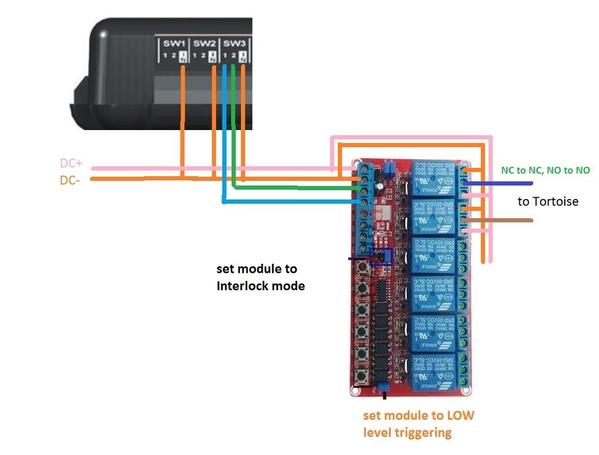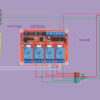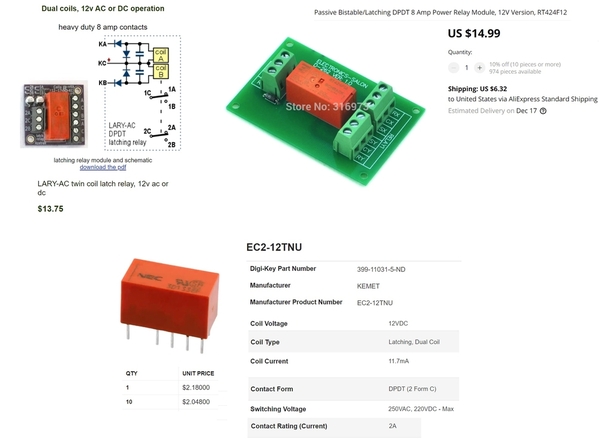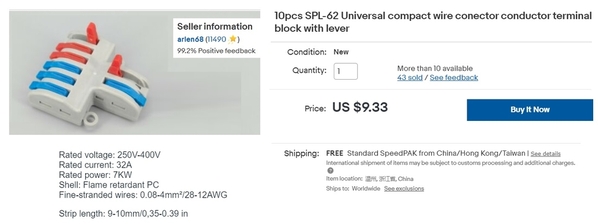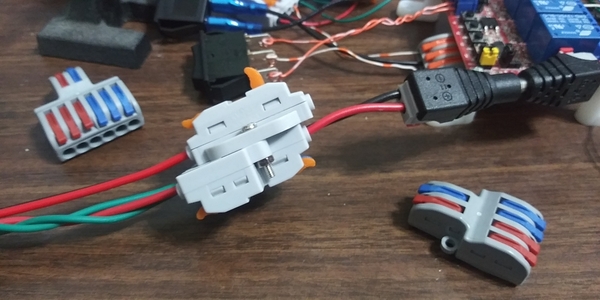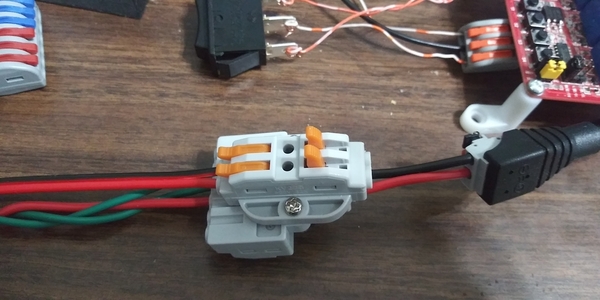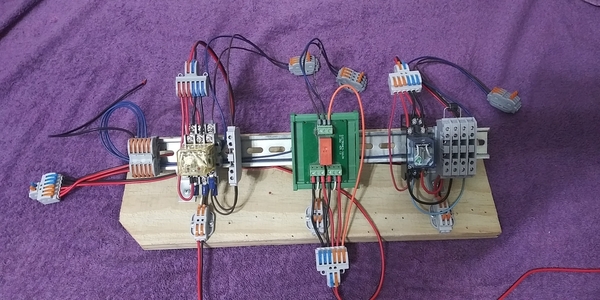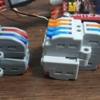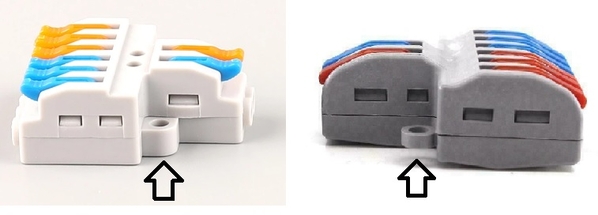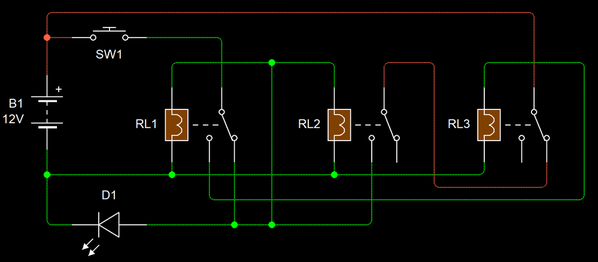Being the Curious George that I am I picked up a 12V latching relay with the idea that I could use it to operate my Tortoise switch machines via my AIU. The problem I'm having is the lack of instructions. I am able to trigger them manually by pushing to button associated with the corresponding relay. I know that I'll need two relays to operate each switch machine. However, I am having an issue with figuring out how to connect them to my AIU. Anyone have any experience with these?
Here is a pic of the relay and what instructions/description I have. Any help would be appreciated.
Thanks for your time
Milwrd


Descriptions:
Every Channel has a signal indicator can know which way switch at working.
3 in ONE: Self-locking / Interlocking / Trigger (jog)
Self-locking is to click, the relay, and then click the relay off. 6-way self-locking independent of each other, You can also add the trigger switch (CH Terminal Blocks), with high or low trigger (optional), Can simultaneously control 6 way, such as lighting control and so on.
Trigger (jog) relay when pressed, release the button to close the relay. You can also add the trigger switch (CH Terminal Blocks), with high or low trigger (optional). Applicable to such as electric doors, electric door locks, And SCM docking requires only a high or low pulse circuits circuit.
Interlocking fan design is a typical application, when S1 S1 pressed the relay; When pressed S1 S2 disconnected, S2's relay. 2-way interlocking only way to turn, you can also add the trigger switch (CH Terminal Blocks), With high or low trigger (optional). Practical applications such as fans gear switch circuit.
Features:
- Dual-panel design PCB, 6 independent design, interfering
- Using single-chip design, reliable performance, strong anti-interference, not false triggering, superior performance;
- User-friendly interface design, with good and terminals can be connected directly lead
- There are opto-isolated trigger end, trigger external power supply independent, truly completely isolated;
- With 6 touch switch as product testing, stability testing of products directly;
- Has a power indicator (green LED) and 6 switches indication (red LED).;
- Use Songle genuine relay control load in 250V 10A (AC) and 30V 10A (DC) under load can withstand;
- Module size: 110x57x18.5mm, Weight: 100g;
- Designed with four bolt holes: pitch 104x51, aperture 3mm.
Electrical parameters:
Trigger voltage: LOW is 0-2.5V, high defaults to 3.5-5V (If 12V voltage trigger, you need series connection a 5.1-6.8K resistor; 24V voltage trigger, you need series connection a 15-22K resistor, otherwise it will burn the chip)
Supply voltage : 12V (DC) Maximum power consumption : 300mA
Load : 250V 10A (AC) or 30V 10A (DC)
Module interfaces:
1.DC +: Module power supply, 12V DC+;
2.DC-: Module power supply , 12V DC- ;
- IN1-IN6: 1-6 channel trigger relay control terminal , High or low trigger;
- TRV+: External trigger positive power supply.
- TRV-: External trigger negative power (If you want an external trigger ,please unplug the Jumpers Power RTV-and GND, TRV+ and VCC)
- 6 micro switch: 1-6 channel relay test button, trigger effective when low
- High / low level trigger selection, when COM and L phase, low trigger force when COM and H terminal phase, high level trigger effective
- NO1-NO6: normally open relay interfaces, relay before the vacant after the pull shorted with COM
- COM1-COM6: Relay Common Interface
- NC1-NC6: normally closed relay interface relay shorted with COM ago, after the pull-vacant




